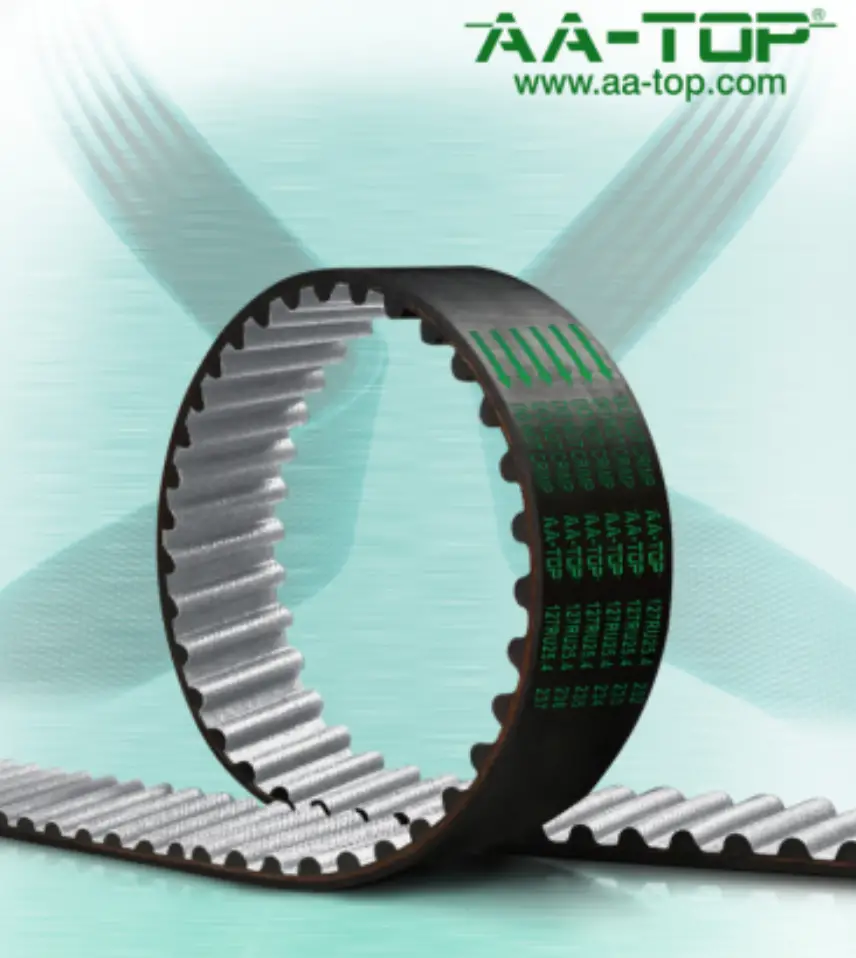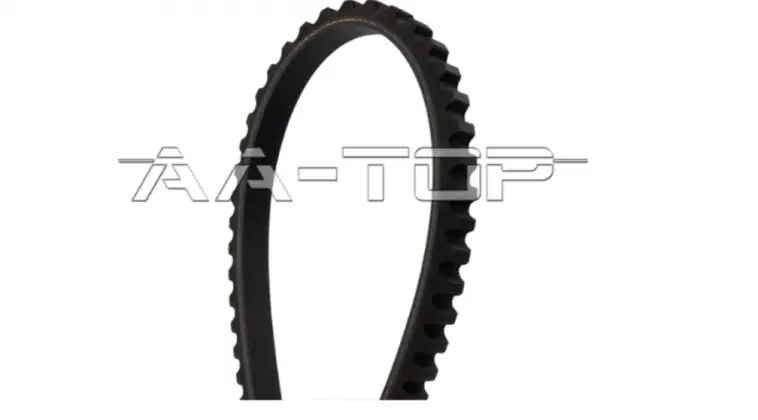The Timing belt is an important part of the engine air distribution system. It is connected to the crankshaft and matched with a certain transmission ratio to ensure the accuracy of the intake and exhaust time. The use of belts rather than gears for transmission is due to the low noise of the belt, its small amount of variation and its ease of compensation. It is obvious that the life of the belt is definitely shorter than that of the metal gear, so the belt should be replaced regularly.
The timing belt is used to support the upper and lower wheels. The upper part is connected to the timing wheel of the engine cylinder head and the lower part is connected to the crankshaft timing wheel. The timing wheel is connected with a camshaft. The camshaft has a cam and its contact point is small. The rocker arm and the rocker arm generate pressure through the power brought by the timing belt, and play the role of jacking up; the function of jacking up the intake valve is to let the atomized gasoline enter the cylinder block, and when the exhaust valve is jacked up, the exhaust gas is exhausted. When the camshaft is recessed (note: not a raised place), the intake valve and the exhaust valve are closed at the same time, the compression ratio is generated, the distributor is fired, and the internal combustion begins to generate power.

AA-TOP is a group company specialized in auto spare parts with several high-tech production bases in China which including development,production and sales.
The company now had various kinds of international advanced production lines and high-quality professionals, committed to new product development and brand operations with strict scientific management which leads to remarkable results.
1.How does it work?
During the operation of the automobile engine, four processes of intake, compression, explosion and exhaust occur continuously in the cylinder, and the timing of each step should be matched with the movement state and position of the piston to make the intake and exhaust. The piston lifts are coordinated with each other. The timing belt acts as a “bridge” inside the engine and transmits the force to the corresponding parts under the drive of the crankshaft. When the vehicle’s internal toothed belt is broken which may cause the engine’s internal valve damage, timing belts should be replaced in time.
Timing belts are rubber parts. As the engine working time increases, accessories for timing belts such as timing belt tensioners, timing belt pumps will get old. Therefore, for engines equipped with timing belts, manufacturers will have strict requirements, and regular timing belts and accessories will be replaced after a certain period. The replacement cycle will vary with the structure of the engine. Generally, the vehicle will travel to 6 0,000 to 100,000 km should be replaced.
2.Regular maintenance is required.
Today, as the car becomes more advanced, the workload of maintenance will gradually decrease. As a result, car owners often think that their vehicles do not need to be repaired. Automobile manufacturers clearly specify the importance of regular inspection and replacement of the timing belt. As part of regular maintenance and comprehensive inspection, the maintenance of the timing belt should be added to the regular maintenance procedure. If you ignore regular inspections and timely replacement of faulty timing belts may cause serious consequences.
Unlike the drive belts of the attachments, they are easy to see and easy to inspect. Timing belts are often hidden behind a cover and can be accessed depending on the engine and engine compartment. However, in most cases, the lid on the timing belt, at least the upper half of the lid, can be removed so that you can carefully inspect and replace the belt. When checking, if you find out it’s not a well-maintained, moderately tensioned belt, you should replace it in time.
3.Inspection of Malfunction.
When the timing belt breaks, the valve is stopped and the engine is stopped. If the engine is working during the rupture, it means that there is a gap between the piston at the top of the stroke and the open valve. The rupture in both cases will cause damage to the timing belt itself.
If the timing belt is not broken, it does not mean that it has no problem. As the belt become older and older, it tends to stretch beyond the range that the tensioning device can compensate, thus producing a timing sprocket slip. The wear of the teeth and the adhesion of lubricating oil can also cause slippage. During the inspection, if the belt has hardness reduction, abrasion, fiber breakage, or cracks or cracks, it indicates that the belt is damaged and cannot be used any more. Next, check the sprocket fault. Damaged sprockets can “burn out” the belt material and exacerbate belt tooth. A sprocket failure can also cause the valve train to create greater resistance to the timing belt.
Indeed AA-TOP can ensure high-quality timing belts and other auto spare parts.




Comments
Loading…